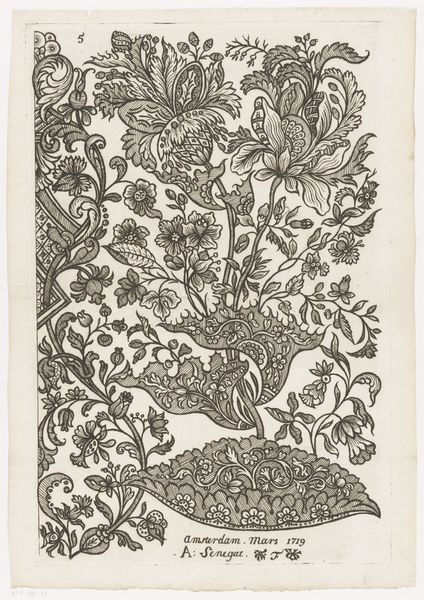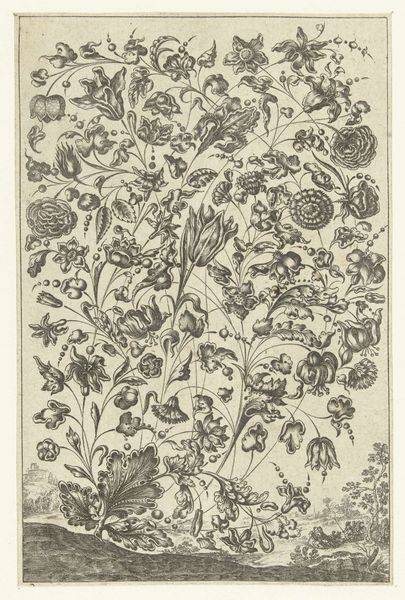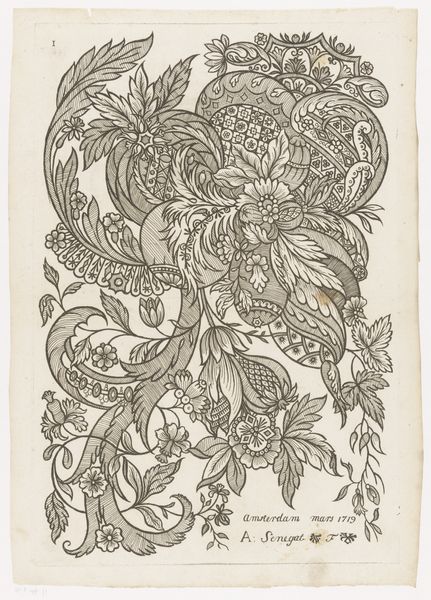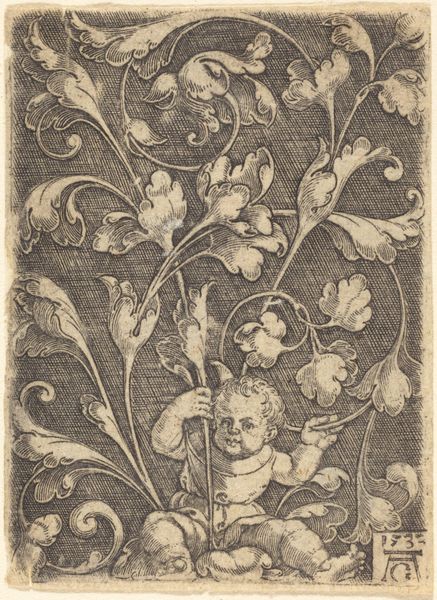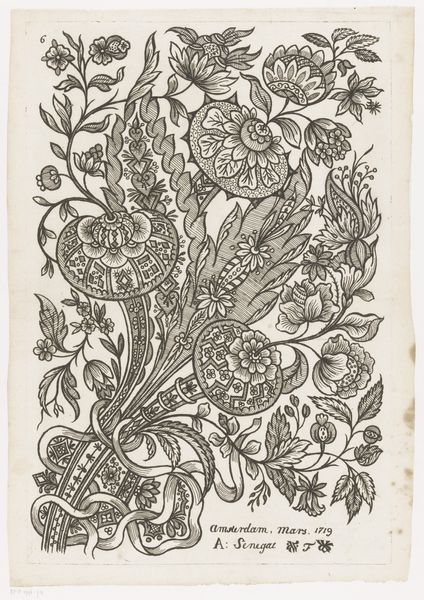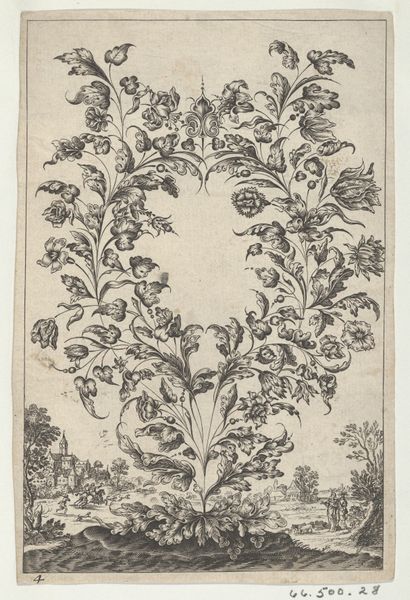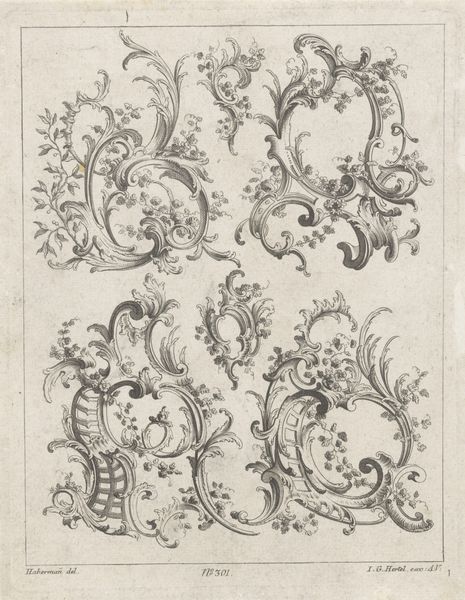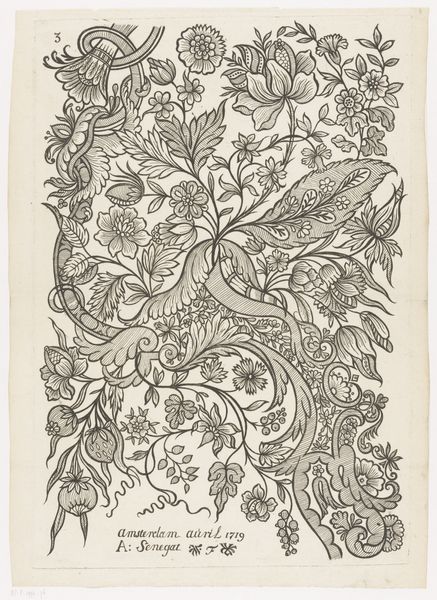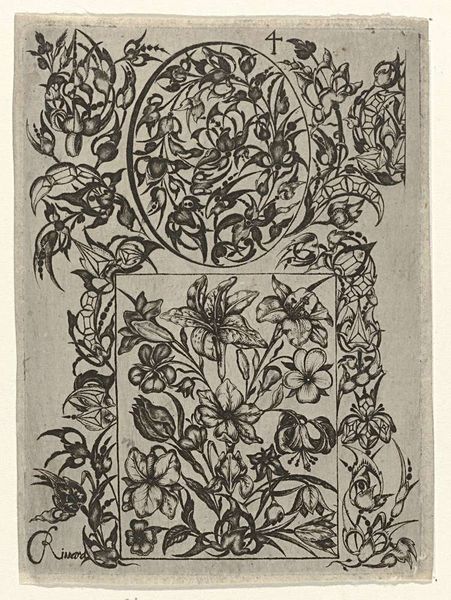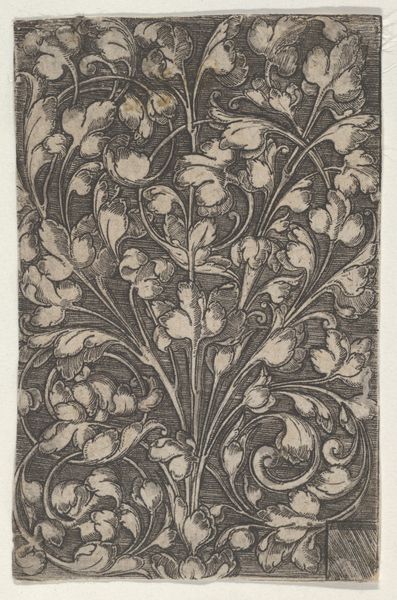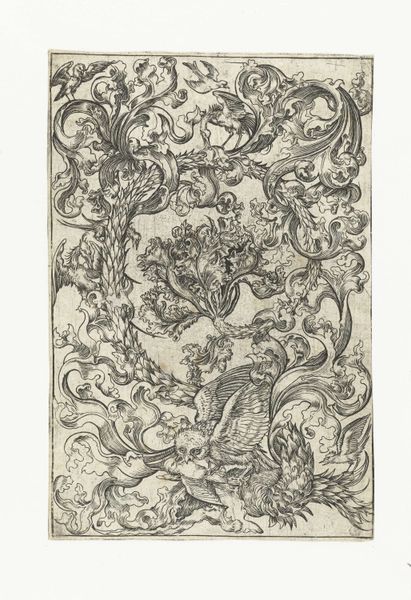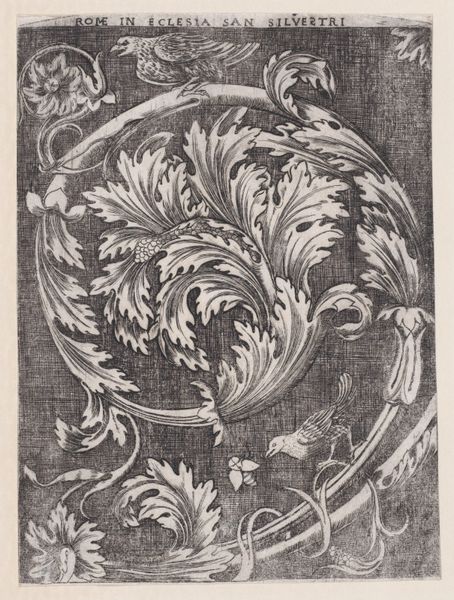
drawing, graphic-art, paper, ink, pen
#
drawing
#
graphic-art
#
pen drawing
#
pen illustration
#
pen sketch
#
old engraving style
#
paper
#
ink line art
#
ink
#
pen-ink sketch
#
line
#
pen work
#
sketchbook drawing
#
pen
#
decorative-art
#
coloring book page
#
doodle art
Dimensions: height 390 mm, width 264 mm
Copyright: Rijks Museum: Open Domain
This is a textile design made in Amsterdam, March 1719, by Alexander Senegat. This artwork invites us to consider the intersection of commerce, culture, and artistry in the 18th century. Senegat's design would have been commissioned to be printed onto textiles, reflecting the era’s global trade networks and consumer culture. Textiles were a significant marker of identity and status, intricately linked with gender, class, and race. This design, with its floral motifs and ornate patterns, speaks to the aesthetic preferences of the European elite, who sought luxury goods to display their wealth and taste. It is worth remembering that the production of these textiles often relied on the exploitation of labor, including enslaved people, highlighting the complex relationship between beauty, consumption, and social injustice. Consider how this design, seemingly innocent, carries the weight of its historical context. It invites us to reflect on the personal and collective stories woven into the fabric of our material world.
Comments
No comments
Be the first to comment and join the conversation on the ultimate creative platform.
